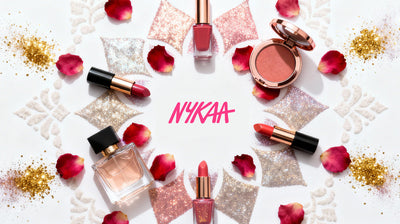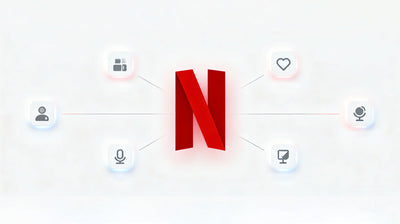In This Article
The Direct-to-Consumer (D2C) market in India is a massive force, expected to be worth $60 Billion by 2027 [Inc42]. In the middle of this, HUL's acquisition of Minimalist - a science baed skincare brand, founded in 2020 - stands out as a landmark deal.
Let’s get straight to the point: this isn’t just another acquisition - it’s a strategic move by HUL trying to keep up in a digital-first landscape. So, what made Minimalist, such a hot piece?
The answer: Minimalist nailed its marketing, identified and zeroed on the market gap that the big guys ignored, and built serious value from the ground up.
As for HUL, they’re not exactly reinventing the wheel internally, so buying innovation is their shortcut while internal R&D lags behind.
The Trends Rewriting Beauty & Personal Care
Trend 1: Rise of Science-Backed Skincare
Science-backed skincare is rapidly gaining traction in the market. Consumers are becoming more discerning - they’re no longer swayed by flashy marketing or celebrity endorsements alone. The 2022 Mintel consumer survey highlights that 60% of Indian millennials prioritize ingredient transparency, and this shift is driving a clear demand for clinically validated skincare products.
Trend 2: Personalization
D2C brands really stand out because they have direct access to customer data and use it smartly. Minimalist’s AI-powered skin diagnostic tool is a great example - it analyzes user selfies and, instead of offering one-size-fits-all advice, it actually suggests routines tailored to each individual. That kind of personalized experience? It keeps customers engaged and coming back, which, let’s be honest, is exactly what you want in this space.
Trend 3: The Corporate Innovation Dilemma
Old-timers such as HUL are in a paradoxical situation where they have large R&D budgets but cannot move quickly. On the other hand, startups like Minimalist, with small teams and community-driven R&D, are able to make new products faster. HUL's purchase is similar to its buying of Dollar Shave Club in 2016, a move to 'buy' agility which they cannot create by themselves.
Minimalist’s Playbook: Disrupting Skincare
Identifying the Market Gap
Before Minimalist, India’s skincare market was split in two. On one hand, you had the legacy Ayurvedic brands like Himalaya and Forest Essentials. On the other, the high-priced Western imports - think L’Oréal, Estée Lauder - targeted at a tiny sliver of the population that could actually afford them. In between? Nothing.
Minimalist recognized this glaring gap. They saw an opportunity in affordable, science-driven skincare for millennials - an audience who cared more about ingredients and results than glossy ads.
The mission: cut the jargon, simplify routines, and make dermatologist-grade products accessible to the masses.
Product Strategy: Facts Over Flash
Minimalist didn’t bother with vague promises or fancy packaging. Their naming is straight to the point - “10% Vitamin C + Ferulic Acid Serum” tells you exactly what’s inside and what you’re paying for.
This transparency didn’t just end at the label. They published clinical trial results on their website, setting a new bar for accountability in a market notorious for pseudoscience.
Marketing: Building Trust, Not Just Buzz
Minimalist’s marketing approach was a masterclass in credibility. Instead of the usual aggressive campaigns, they built an engaged, educated community.
-
Founder-Led Engagement
Reddit AMAs: The co-founders personally took part in the Reddit AMAs where they responded to questions hence giving a face to the brand.
- Email Newsletters
Weekly skincare tips without ever pushing a product helped the brand to gain trust.
-
Influencer Collaborations
Minimalist collaborated with micro-influencers (10K–50K followers) in dermatology and skincare that were more credible than a celebrity.
-
Campaign Spotlight: SkinSchool
In 2022, Minimalist launched SkinSchool - a free webinar series featuring dermatologists. Attendees received personalized product samples, driving a 40% conversion rate from trial to purchase.
Why HUL Bet on Minimalist: The Strategic Calculus
HUL’s R&D Conundrum
HUL’s R&D spend has been at a standstill at about 0.8% of revenue (₹800 crore in 2022) and is trailing behind global peers such as L’Oréal (3.3%). HUL is good at incremental innovations (e.g., Dove variants) but fails to make disruptive breakthroughs. Minimalist’s fast-moving R&D, with only 3–4 product launches per year, is a way to innovation.
Capturing Growth
India’s premium skincare market is expanding at a 12% CAGR (McKinsey, 2023). The urban millennial base of Minimalist (average order value: ₹1,200) is a perfect fit for HUL’s mass-market staples (Dove, Pond’s).
HUL’s Acquisition Playbook
HUL’s playbook is similar to its global “acquire-and-scale” model:
-
Target High-Growth Niches: Minimalist (science-backed skincare), Dollar Shave Club (subscription grooming).
-
Leverage Distribution Arm: HUL’s 8 million retail outlets to spread Minimalist’s products.
-
Past Acquisitions:
Indulekha (2015): An Ayurvedic hair care brand, scaled to a revenue of ₹500 crore.
Vwash (2020): A feminine hygiene brand, currently available in 50,000 stores.
Industry Implications: The Rules of D2C
Validation of D2C Models
Minimalist's success indicates that D2C profitability can be a reality.
The Innovation Race
Startups: Should deepen their moats (for instance, Minimalist’s emphasis on scientifically-backed formulation).
Consumer Trust as Currency
55% of Gen Z boycotts brands over ethics (Deloitte, 2023). Minimalist’s transparency sets a benchmark; greenwashing is now a death sentence.
Future Success
Here’s the reality: HUL brings serious scale, but that’s not the full story. Minimalist can’t afford to lose its authentic, community-driven approach and agility just because it’s getting a bigger platform.
If Minimalist retains its community-first ethos while leveraging HUL’s distribution, it could become India’s answer to what The Ordinary is for Estée Lauder.
Bottom line? Growth is great, but not at the expense of what made the brand special in the first place.




